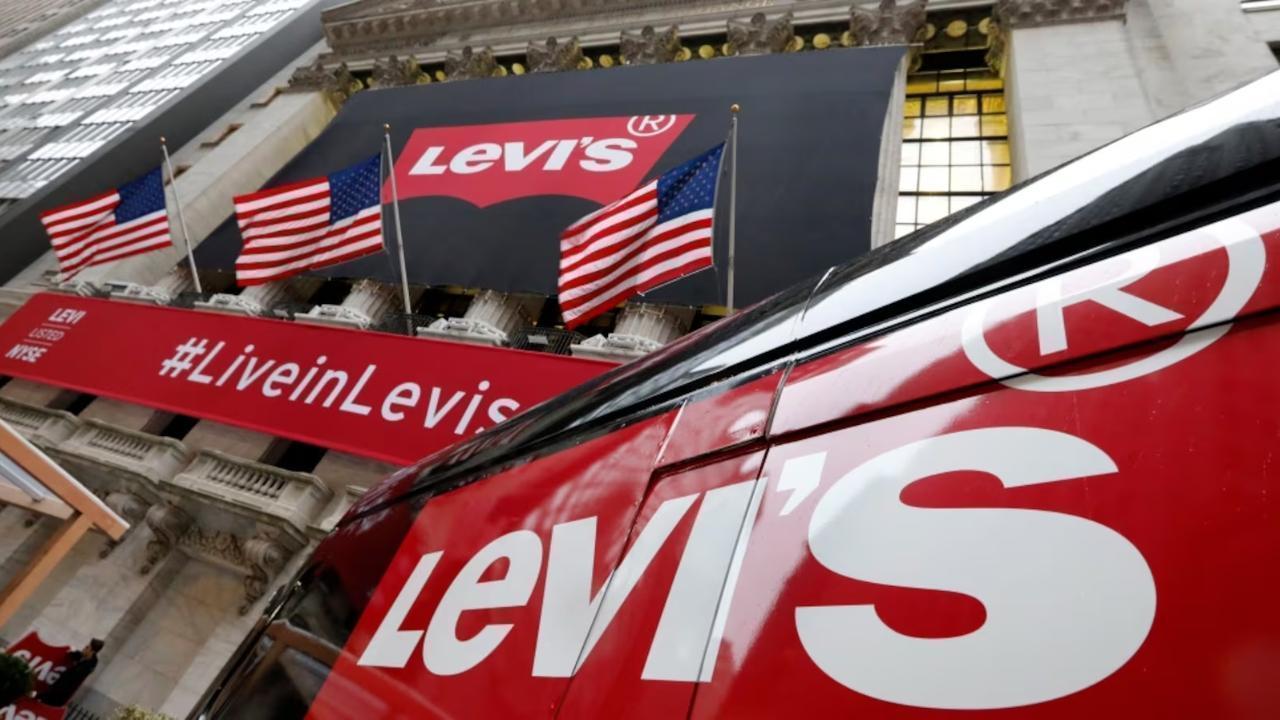
Pakistan Women Face Tough Challenge Against Experi
Pakistan’s women’s team braces for World Cup clash with Australia, facing experienced opponents on u

Photo:AP
Strong Q2 Performance Amid Tariff Pressures
Levi Strauss reported robust second-quarter earnings and revenue of approximately $1.45 billion, up 6% year-over-year. Adjusted earnings per share came in at $0.22, surpassing analyst expectations, and gross margins expanded to a record 62.6%. Despite a challenging backdrop of U.S. import tariffs, the company exceeded both sales and earnings forecasts for the quarter. Thanks to its direct-to-consumer focus and strategic merchandising mix—including women’s apparel, dresses, skirts, and wide-leg “jorts”—Levi’s has maintained strong momentum.
Demand Growth Across Regions
Global performance was a key driver in Levi’s success. International revenue accounted for nearly 60% of total sales, with European regions showing a particularly strong 14% surge. U.S. revenues also increased by 7%. These results underscore Levi’s ability to tap into global trends—including Y2K and Western-inspired styles—while balancing its brand appeal across diverse markets.
Raising Full-Year Guidance
Following Q2 results, Levi Strauss lifted its full-year revenue guidance to growth of 1–2%, a marked improvement from earlier expectations of a potential decline. Earnings per share guidance was also raised to a band of $1.25–$1.30 from $1.20–$1.25. The new forecast factors in current tariffs—30% on China and 10% on other countries—but excludes potential new levies set to take effect on August 1. CFO Harmit Singh noted that tariff impact would shave off just two to three cents per share, thanks to the company’s mitigation measures.
Diversified Sourcing Strategy
A cornerstone of Levi's resilience has been supply-chain diversification. The company sources minimally from China—around 1%—and instead relies on manufacturing in Bangladesh, Cambodia, Indonesia, Egypt, Pakistan, and Sri Lanka. This shift has helped offset the effects of U.S. tariffs. Additionally, Levi’s has standardized its product assortments and limited SKUs to improve inventory efficiency and agility during global economic uncertainty.
Product Mix and Trending Styles
Levi’s has capitalized on emerging fashion trends with strong traction in women’s denim attire, including skirts and dresses, and casual 1990s- and early-2000s–inspired “jorts.” Its Beyond Yoga activewear line also showed strength. By reducing less popular SKUs and focusing on best-selling styles, Levi’s enhanced its margin profile and maximized revenue per square foot—especially in direct-to-consumer channels.
Analyst Reactions and Valuation Outlook
Market response was immediate, with shares rallying over 7% pre-market and climbing roughly 11% intraday. JPMorgan raised its price target from $18 to $23, reflecting confidence in Levi’s sustained momentum. The stock now trades at about 15× projected forward earnings, lower than some lifestyle peers but in line with expectations given macroeconomic headwinds. Analysts prominently pointed out Levi’s ability to navigate tariff pressures without sacrificing profitability or growth.
Financial Discipline and Shareholder Returns
In addition to operational gains, Levi’s has made strides in shareholder value initiatives. The company announced a boost to its quarterly dividend and earmarked $100 million from the recent sale of Dockers to buy back shares, reinforcing its commitment to capital management. Investments in direct channels and e-commerce are balanced with a core value proposition geared toward margin optimization.
Balance Sheet Strength and Inventory Control
Levi’s ended Q2 with a healthier inventory position—up 15% year-over-year—but with improved quality thanks to reduced underperforming SKUs. The company noted that U.S. inventory for key selling seasons is 60% in place, helping it anticipate demand for events like Prime Day and back-to-school. This positions the company well for the second half of 2025 and holiday-related retail activity.
Navigating Macroeconomic and Trade Risks
While Levi’s benefits from strong demand, it remains alert to macroeconomic volatility—such as consumer spending slowdowns, inflation pressures, and potential tariff hikes. The company is monitoring proposed 36% tariffs on Cambodia and 35% tariffs on Bangladeshi imports that could kick in. However, its diversified footprint and targeted pricing adjustments are designed to help absorb cost pressures without full-scale price hikes for consumers.
Digital Expansion and Direct-to-Consumer Focus
A key element of Levi’s growth strategy lies in its focus on digital transformation. E-commerce growth remains a major pillar, with online sales contributing nearly 30% of total revenue. The company has enhanced its mobile and web interfaces, optimized checkout experiences, and deployed personalized marketing strategies to increase conversion rates. Its loyalty programs and direct-to-consumer sales have given the company valuable data insights, helping tailor product lines and improve customer retention.
In-store experiences have also improved, with flagship stores featuring digital fitting rooms, smart mirrors, and integrated point-of-sale systems that unify in-store and online inventories. These features enhance customer satisfaction and help staff manage inventory more effectively.
Sustainability and Social Responsibility
Levi Strauss has continued to lead in sustainability practices within the apparel industry. It recently launched its "Water<Less" initiative to reduce water usage in manufacturing and plans to power 100% of its company-operated facilities with renewable electricity by 2027. The company has committed to using sustainable cotton sources and reducing carbon emissions across its supply chain.
Additionally, Levi’s has pushed forward its social responsibility programs, including the Worker Well-being Initiative, which focuses on education, healthcare access, and financial empowerment for workers across its supplier factories. These initiatives have helped improve public perception and build brand loyalty, especially among younger consumers who increasingly prioritize ethical manufacturing.
Brand Collaborations and Influencer Strategy
The company has also expanded its influence through high-profile collaborations and ambassador partnerships. Recent campaigns with celebrities and influencers—ranging from musicians to digital creators—have successfully engaged Gen Z and millennial consumers. Limited edition lines and social media campaigns have driven traffic to its e-commerce platforms and retail stores alike, while also creating a sense of exclusivity around new launches.
Collaborations with designers, such as Levi’s x New Balance and Levi’s x Pokémon, have introduced the brand to diverse audiences. Strategic sponsorships in fashion and music festivals also continue to boost visibility and relevance.
Retail Footprint Optimization
Despite the growth of online channels, Levi Strauss continues to see value in brick-and-mortar retail. The company is streamlining its global store network by focusing on high-traffic, high-margin locations while closing underperforming stores. New concept stores emphasize immersive brand experiences, sustainability education, and customizable products.
Franchise partnerships have expanded in Asia and Latin America, allowing Levi’s to scale with lower capital intensity. These stores are designed to reflect regional styles while adhering to the company’s global brand identity.
Innovation in Product Design
Levi’s investment in innovation extends beyond marketing into core product development. The company has incorporated stretchable, moisture-wicking, and stain-repellent technologies into traditional denim. It is also investing in AI-driven design tools that analyze sales trends, customer feedback, and material performance to optimize product iterations.
New capsule collections have used biodegradable threads and recyclable components, aligning with circular economy principles. The Future Finish project, which uses lasers to finish jeans, has also helped cut down on water and chemical use while expanding style variety.
Outlook and Strategic Priorities Ahead
Looking ahead to fiscal 2025, Levi’s strategy focuses on several core priorities:
• Continue expanding direct-to-consumer sales through omnichannel platforms and enhanced store experiences. • Refine product mix by accelerating growth in women’s apparel and trending styles. • Strengthen global supply chain resilience through geographic diversification and inventory management. • Manage tariff impact through pricing strategies, cost controls, and supply flexibility. • Deliver value for shareholders via dividends, buybacks, and disciplined capital deployment. • Advance sustainability goals and ethical labor practices across the supply chain. • Develop next-gen retail formats and digitized customer journeys. • Continue forming influential brand partnerships and cultural campaigns.
Conclusion
Levi Strauss’s latest report signals a company in strong form—able to drive growth, protect margins, and serve consumer trends amid geopolitical uncertainties. The company’s commitment to global markets, diversified supply, and direct consumer engagement positions it well as a resilient leader in apparel retail. With rising demand, measured financial discipline, and optimism around policy visibility, Levi’s appears well-poised for continued performance in the year ahead.